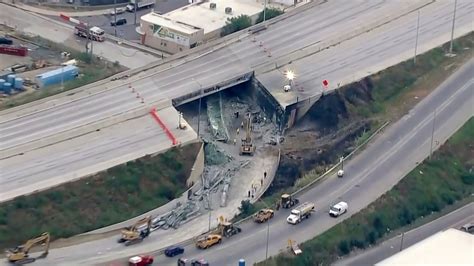
A critical stretch of Highway 1 in California, already plagued by persistent landslides and erosion, is on the verge of collapse, prompting experts to warn of its potential imminent failure and the devastating consequences for coastal communities and the state’s economy.
SANTA CRUZ COUNTY, Calif. – State Route 1, a vital artery for California’s coastal communities and a popular scenic route for tourists, is facing a dire threat as relentless landslides and accelerating erosion endanger its structural integrity. Experts are warning that a significant section of the highway, particularly in Santa Cruz County, could collapse imminently if immediate and substantial action isn’t taken. The potential failure of this key transportation corridor would not only isolate coastal communities but also inflict severe economic damage on the region and the state as a whole.
“We’re talking about a potential failure of a critical transportation corridor,” stated Dr. Allison Duvall, a coastal geologist who has been studying the region’s geological instability for over a decade. “The rate of erosion has accelerated dramatically in recent years due to a combination of factors, including increased storm intensity and rising sea levels. If we don’t act now, we risk losing a significant portion of Highway 1.”
The affected area spans several miles along the coastline, where the highway is precariously perched on eroding cliffs. The California Department of Transportation (Caltrans) has been battling the relentless forces of nature for years, implementing temporary fixes and emergency repairs to keep the highway open. However, these efforts are proving increasingly insufficient in the face of the escalating environmental challenges.
“We’ve been working tirelessly to maintain Highway 1 and ensure the safety of motorists,” explained Marcus Trent, a Caltrans spokesperson. “However, the scale of the problem is growing exponentially, and the current funding and resources are simply not enough to address the underlying issues.”
The situation is further complicated by the complex geological makeup of the region. The coastline is composed of unstable sedimentary rock formations that are highly susceptible to erosion and landslides. These geological vulnerabilities, combined with the impacts of climate change, are creating a perfect storm that threatens the long-term viability of Highway 1.
The consequences of a highway collapse would be far-reaching. Coastal communities would face significant disruptions in transportation, limiting access to essential services such as healthcare, education, and emergency response. Businesses that rely on tourism would suffer devastating losses, and the overall economic vitality of the region would be severely impacted.
“Highway 1 is the lifeblood of our coastal economy,” said Maria Rodriguez, a local business owner. “If it collapses, it would be a catastrophe for our community. We need the state and federal government to step up and provide the resources needed to save our highway.”
Local residents are growing increasingly concerned about the potential for a highway collapse. Many have witnessed firsthand the accelerating erosion and the increasing frequency of landslides. They fear that it is only a matter of time before a major failure occurs.
“We’ve seen the cliffs crumbling before our eyes,” said John Smith, a longtime resident of a coastal community. “We’re worried about our safety and the future of our community. We need action now before it’s too late.”
Caltrans is currently exploring a range of long-term solutions to address the problem. These include building retaining walls, stabilizing the cliffs, and rerouting sections of the highway inland. However, these solutions are expensive and time-consuming, and there is no guarantee that they will be effective in the long run.
The situation on Highway 1 serves as a stark reminder of the vulnerability of coastal infrastructure to the impacts of climate change. As sea levels rise and storms become more intense, coastal communities around the world will face similar challenges. It is imperative that governments and policymakers take proactive steps to protect coastal infrastructure and mitigate the risks posed by climate change.
The potential collapse of Highway 1 also highlights the need for increased investment in infrastructure resilience. Aging infrastructure systems are particularly vulnerable to the impacts of climate change, and it is essential to modernize and upgrade these systems to ensure their long-term viability. This requires a concerted effort from all levels of government, as well as the private sector.
The crisis on Highway 1 demands immediate attention and decisive action. The future of coastal communities and the state’s economy depend on it. Without a comprehensive and sustained effort to address the underlying issues, the potential for a catastrophic highway collapse will only continue to grow.
Immediate Impact and Disruption
The immediate impact of a collapse would be felt most acutely by the residents of the isolated coastal communities. Access to essential services, including emergency medical care, would be severely hampered. The ability to transport goods and supplies would be disrupted, leading to potential shortages and price increases. The psychological impact on residents, facing isolation and uncertainty, would also be significant.
“The nearest hospital is over an hour away,” said Sarah Miller, a local nurse. “If the highway goes, that time doubles, maybe triples. That could be the difference between life and death for someone experiencing a medical emergency.”
Economic Fallout
The economic consequences of a Highway 1 collapse would ripple throughout the region and beyond. The tourism industry, a major driver of the coastal economy, would be devastated. Hotels, restaurants, and other businesses that cater to tourists would face significant losses, potentially leading to closures and job losses. The agricultural sector, which relies on Highway 1 to transport crops to market, would also be severely impacted. The overall economic vitality of the region would be significantly diminished.
“Our business depends on tourists driving up and down the coast,” said David Chen, a restaurant owner. “If they can’t get here, we’re finished. We’ll have to close our doors and lay off our employees.”
Environmental Concerns
The erosion and landslides that are threatening Highway 1 are also having a significant impact on the environment. The loss of vegetation and soil is contributing to increased sedimentation in coastal waters, which can harm marine life and degrade water quality. The runoff from construction and repair activities can also pollute coastal ecosystems. The potential for a major highway collapse poses an even greater environmental risk, as debris and pollutants could contaminate sensitive coastal habitats.
“The landslides are destroying the natural habitat,” said Emily Carter, an environmental scientist. “The sediment is smothering the kelp forests and harming the marine life. We need to find a way to protect the highway without further damaging the environment.”
Caltrans’ Response and Challenges
Caltrans faces a monumental challenge in its efforts to maintain Highway 1. The agency is grappling with limited funding, a complex regulatory environment, and the unpredictable forces of nature. The agency has implemented a variety of strategies to address the problem, including building retaining walls, stabilizing slopes, and installing drainage systems. However, these efforts are often temporary and insufficient to address the underlying geological instability.
“We’re doing everything we can with the resources we have,” said Marcus Trent, the Caltrans spokesperson. “But the problem is bigger than any one agency can handle. We need a coordinated effort from all levels of government to find a long-term solution.”
One of the biggest challenges facing Caltrans is the difficulty of obtaining permits for construction and repair activities in sensitive coastal areas. Environmental regulations are designed to protect coastal ecosystems, but they can also delay and complicate efforts to stabilize the highway.
“We understand the need to protect the environment,” said Trent. “But the permitting process can be extremely slow and cumbersome. We need to find a way to streamline the process without compromising environmental safeguards.”
Potential Long-Term Solutions
Finding a long-term solution to the Highway 1 crisis will require a comprehensive and multi-faceted approach. This will involve addressing the underlying geological instability, mitigating the impacts of climate change, and investing in infrastructure resilience. Several potential long-term solutions have been proposed, including:
- Rerouting the highway inland: This would involve building a new section of highway further away from the eroding coastline. This would be the most expensive option, but it would also provide the most long-term security.
- Building a massive seawall: This would involve constructing a large concrete wall along the coastline to protect the highway from erosion. This would be a controversial option, as it could have significant environmental impacts.
- Implementing a managed retreat strategy: This would involve gradually moving the highway inland as the coastline erodes. This would be the least expensive option, but it would also require the abandonment of some coastal communities.
- Ground Improvement Techniques: Utilizing techniques such as soil nailing, deep soil mixing, and jet grouting to strengthen the existing soil and rock formations supporting the highway.
- Constructing a Tunnel: Building a tunnel underneath the unstable section of the coastline could bypass the erosion issues, providing a stable and protected passage for traffic.
The Need for a Coordinated Effort
Addressing the Highway 1 crisis will require a coordinated effort from all levels of government, as well as the private sector. The federal government needs to provide funding and technical assistance to support state and local efforts. The state government needs to streamline the permitting process and invest in infrastructure resilience. Local governments need to work with residents and businesses to develop sustainable solutions. The private sector can contribute expertise and resources to help address the problem.
“This is a problem that affects everyone,” said Maria Rodriguez, the local business owner. “We need to work together to find a solution that protects our communities, our economy, and our environment.”
The Highway 1 crisis is a warning sign of the challenges that coastal communities around the world will face as climate change continues to accelerate. It is imperative that we take action now to protect our coastal infrastructure and mitigate the risks posed by rising sea levels and more intense storms. The future of our coastal communities depends on it.
Community Perspectives and Concerns
The looming threat to Highway 1 has ignited a mix of anxiety, frustration, and determination among the residents of the affected coastal communities. For generations, this highway has been more than just a road; it’s a lifeline connecting them to the outside world, a conduit for commerce, and a symbol of their coastal identity.
“Highway 1 is part of our DNA,” says Patricia Evans, a third-generation resident of Davenport. “My grandparents used to run a small farm, and they relied on that road to get their produce to market. It’s how we survive.”
The potential collapse of the highway evokes fears of isolation, economic hardship, and a diminished quality of life. Residents worry about the ability to access essential services, such as healthcare and education, and the impact on their livelihoods.
“What happens if someone has a heart attack?” asks John Smith, a local fisherman. “The ambulance won’t be able to get here in time. We’ll be completely cut off.”
Beyond the immediate practical concerns, there’s a deeper sense of loss and uncertainty about the future. The beauty and tranquility of the coastal landscape, which has always been a source of solace and inspiration, is now threatened by the forces of erosion and the looming prospect of a highway collapse.
“This place is special,” says Maria Rodriguez, a local artist. “The ocean, the cliffs, the sunsets – it’s all part of what makes this community so unique. It’s heartbreaking to see it being threatened.”
Despite the anxieties, there’s also a strong sense of resilience and determination among the residents. They’re not willing to give up on their community without a fight. They’re organizing community meetings, contacting elected officials, and advocating for solutions that will protect their highway and their way of life.
“We’re not going to sit back and watch our community disappear,” says Patricia Evans. “We’re going to fight for our future.”
The Broader Context of Coastal Erosion in California
The Highway 1 crisis is not an isolated incident. It’s part of a broader pattern of coastal erosion that is affecting communities all along the California coast. Rising sea levels, increased storm intensity, and human activities are all contributing to the problem.
According to the California Coastal Commission, more than 80% of California’s coastline is eroding. The rate of erosion varies depending on the location, but in some areas, the coastline is retreating by several feet per year.
The consequences of coastal erosion are far-reaching. Homes, businesses, and infrastructure are being threatened. Coastal ecosystems are being degraded. And the economic vitality of coastal communities is being undermined.
Addressing the challenge of coastal erosion will require a comprehensive and coordinated approach. This will involve reducing greenhouse gas emissions to slow down the rate of sea-level rise, implementing coastal management strategies to protect vulnerable areas, and investing in infrastructure resilience to withstand the impacts of erosion.
The state of California has taken some steps to address the problem. The California Coastal Commission has developed a Sea-Level Rise Policy Guidance document to help local governments plan for the impacts of sea-level rise. The state legislature has also passed legislation to provide funding for coastal erosion projects.
However, more needs to be done. The state needs to invest more resources in coastal erosion research, develop more effective coastal management strategies, and provide more assistance to local communities that are struggling to cope with the impacts of erosion.
The Highway 1 crisis is a wake-up call. It’s a reminder that we need to take action now to protect our coastal communities from the impacts of climate change. The future of our coast depends on it.
The Role of Climate Change
Climate change is widely recognized as a primary driver behind the escalating coastal erosion crisis. The effects of rising global temperatures are multifaceted, each contributing to the destabilization of coastal areas and the increased vulnerability of infrastructure like Highway 1.
Sea-Level Rise: As global temperatures rise, glaciers and ice sheets melt at an accelerated rate, adding vast quantities of water to the oceans. Thermal expansion, where water expands as it warms, also contributes to sea-level rise. This phenomenon directly impacts coastal areas by increasing the frequency and intensity of flooding, exacerbating erosion, and pushing saltwater further inland, contaminating freshwater sources and damaging ecosystems.
“The sea-level rise is not just a gradual increase; it’s an exponential one,” explains Dr. Duvall. “We’re seeing higher high tides, more frequent storm surges, and increased wave energy impacting our coastlines. Highway 1 is essentially under constant assault.”
Increased Storm Intensity: Climate change is also linked to more frequent and intense storms. Warmer ocean temperatures provide more energy for hurricanes and other coastal storms, leading to higher wind speeds, heavier rainfall, and larger waves. These storms can cause significant damage to coastal infrastructure, including roads, bridges, and buildings.
“The storms are getting stronger, and they’re hitting us more often,” says John Smith, the local fisherman. “The waves are higher, and the winds are fiercer. It’s getting harder and harder to protect our boats and our homes.”
Changes in Precipitation Patterns: Climate change is also altering precipitation patterns, leading to more extreme droughts and floods. Prolonged droughts can weaken vegetation cover, making coastal areas more vulnerable to erosion. Intense rainfall events can trigger landslides and debris flows, further destabilizing coastal slopes and damaging infrastructure.
“We’re seeing longer periods of drought followed by intense bursts of rain,” says Emily Carter, the environmental scientist. “This creates a perfect storm for erosion and landslides. The soil is dry and cracked, and then the heavy rain washes it away.”
Ocean Acidification: While not directly contributing to physical erosion, ocean acidification, another consequence of increased atmospheric carbon dioxide, weakens marine ecosystems. Coral reefs, which act as natural barriers protecting coastlines from wave action, are particularly vulnerable. As reefs die off, coastlines become more exposed to erosion.
The combination of these climate change-related factors is creating a compounding effect that is accelerating coastal erosion and threatening the long-term viability of infrastructure like Highway 1. Addressing climate change is therefore crucial for protecting coastal communities and ensuring the sustainability of coastal infrastructure.
Frequently Asked Questions (FAQs) related to the Highway 1 Crisis
Q1: What is the main reason Highway 1 is at risk of collapsing?
A: The primary reason for the potential collapse of Highway 1 is the combination of relentless landslides and accelerating erosion along the coastline, exacerbated by climate change factors such as rising sea levels and increased storm intensity. The geological makeup of the area, composed of unstable sedimentary rock formations, further contributes to the vulnerability.
Q2: What are the potential economic consequences if Highway 1 collapses?
A: A collapse would severely disrupt transportation, limiting access to essential services and isolating coastal communities. Businesses reliant on tourism would suffer significant losses, leading to closures and job losses. The agricultural sector would face challenges transporting crops, and the overall economic vitality of the region would be significantly diminished.
Q3: What is Caltrans doing to address the problem?
A: Caltrans has been implementing temporary fixes and emergency repairs to maintain Highway 1. They are also exploring long-term solutions such as building retaining walls, stabilizing cliffs, and rerouting sections of the highway inland. However, these efforts are often hampered by limited funding, complex regulations, and the unpredictable nature of the geological instability.
Q4: How is climate change contributing to the Highway 1 crisis?
A: Climate change is contributing through rising sea levels, increased storm intensity, changes in precipitation patterns, and ocean acidification. Rising sea levels exacerbate erosion and flooding, while more intense storms cause greater damage to coastal infrastructure. Changes in precipitation can lead to landslides, and ocean acidification weakens marine ecosystems that protect the coastline.
Q5: What are some potential long-term solutions being considered for Highway 1?
A: Potential long-term solutions include rerouting the highway inland, building a massive seawall, implementing a managed retreat strategy, utilizing ground improvement techniques like soil nailing, and constructing a tunnel underneath the unstable section of the coastline. Each solution has its own costs, benefits, and potential environmental impacts.
The Importance of Proactive Coastal Management
The situation on Highway 1 underscores the critical need for proactive coastal management strategies. Coastal communities worldwide are facing similar challenges due to climate change and other factors, highlighting the importance of planning and implementing measures to protect coastal infrastructure and ecosystems.
Proactive coastal management involves a range of strategies, including:
- Land-Use Planning: Implementing zoning regulations and building codes that restrict development in vulnerable coastal areas.
- Coastal Armoring: Constructing seawalls, revetments, and other structures to protect shorelines from erosion and flooding.
- Beach Nourishment: Replenishing eroded beaches with sand to provide a buffer against wave action.
- Dune Restoration: Restoring and enhancing coastal dunes to provide natural protection against storms and erosion.
- Ecosystem-Based Adaptation: Utilizing natural ecosystems, such as mangroves and coral reefs, to protect coastlines.
- Managed Retreat: Planning for the gradual relocation of infrastructure and communities away from vulnerable coastal areas.
The most effective coastal management strategies are those that are tailored to the specific conditions of each location and that take into account the long-term impacts of climate change. It is also important to involve local communities in the planning and decision-making process to ensure that their needs and concerns are addressed.
By implementing proactive coastal management strategies, we can protect coastal communities and infrastructure from the impacts of erosion and flooding and ensure the long-term sustainability of our coastal resources. The Highway 1 crisis serves as a crucial lesson in the importance of planning, adaptation, and resilience in the face of a changing climate. The future of California’s coast, and coasts around the world, depends on it. The challenge requires commitment, innovation, and a willingness to embrace both engineered solutions and nature-based approaches to safeguard these invaluable regions for generations to come.









